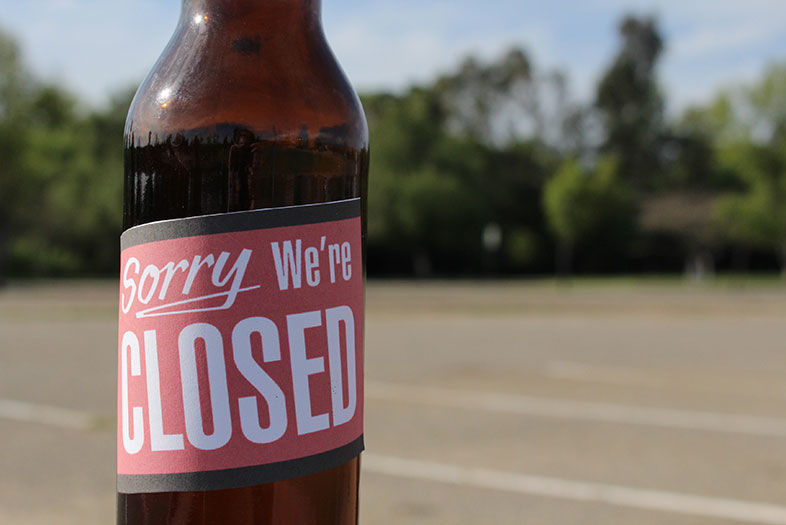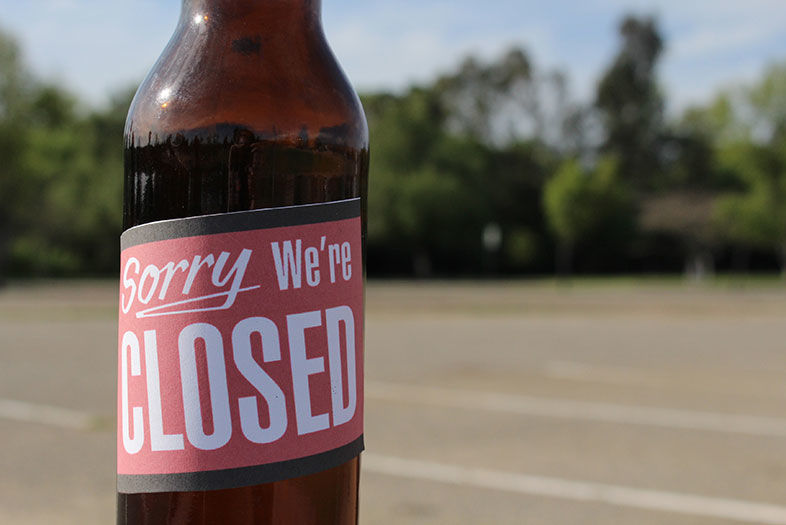How many is too many? That’s the question everyone’s been asking for the past ten years. How many breweries can San Diego sustain before the big “tightening” comes? Five years ago—when we were approaching fifty breweries—the discussion often involved hypotheticals like, “What about a hundred breweries? Will that be the breaking point?” Of course, now that we have more than 120 breweries, we’re all trying to figure out if 150 or 200 or even 500 is the number that overloads the grid and causes meltdown.
Until recently, the brewery closures have been relatively few and far between. In October 2013, the Gaslamp location of Rock Bottom Brewery closed down when their lease was up for renewal. That was really the first permanent contemporary closing of a major and well-established brewery in San Diego. It wasn’t until January 2015 that Beer Brewing, a tiny venture in Oceanside, became the second to unplug its brewhouse.
This past February, however, URBN St. Brewing Co. in El Cajon announced that it was shutting down its operations. The official word from the owners was that they were under-capitalized because they hadn’t adequately calculated the cost of funding a brewery operation. Within weeks of that development, Twisted Manzanita in Santee abruptly closed its satellite tasting room in Pacific Beach and then, a few days later, announced it was shutting down its brewery operations entirely. As far as I know, there was no official explanation from ownership about what precipitated that course of action, but those closures—coming so close together and from well-established companies—felt, for some reason, like the very beginning of what could potentially turn into a trend. At the very least, the closings were a stark reminder that the San Diego beer business is, in fact, a real business (and not always an easy one, as many assume). They also made it clear that not all craft beer news is about phenomenal growth and big payouts and acquisitions; with all the people jumping into the game, sometimes things go south instead of north.
The most recent shutdowns were especially jarring given the fact that both of these companies made very good beer. Twisted Manzanita, in fact, won a medal at the 2012 World Beer Cup and had kegs and bottles in hundreds of locations around the county. URBN St., too, had a solid lineup of well-made, food friendly brews, including a Saison that won a medal at the 2015 Great American Beer Festival.
Can San Diego sustain 100 Green Flashes? Probably not. Can it sustain 200 “nanos” making 500 barrels a year? Entirely possible.
If I had to guess, I would say that most attrition in our beer community will not likely come from there being “too many breweries” per se; not in the sense that, at some point, there could be too much beer and not enough people to drink it. Nor will it come from a “weeding out” of the folks making mediocre or even bad beer (based solely on beer quality, I can name a few places that, by all rights, should have been out of business years ago). In my opinion, most closures will likely stem from a simple over-confidence in the speed of growth and an overestimation of how quickly investment can be recouped. The real key to understanding the eventual “contraction” or “thinning” will be to understand the underlying business assumptions of each company, not its production capacity, how many other breweries are competing, or even the quality of its beer.
It may seem obvious, but not all breweries are created equal. When we talk about growth and the total number of breweries, we also have to talk about the size and kind of breweries in the mix. Yes, we have 120 working brewing locations in the county right now, but I’d estimate that 60%-70% of them are brewing in small office park spaces, producing maybe 500-750 barrels a year and selling every pint through their own tasting room. Less than 10% of the breweries are truly “large” in the Stone, Ballast Point, Karl Strauss, or Green Flash sense. So, when we talk about numbers of breweries, we really have to qualify which kinds of breweries we’re talking about. Can San Diego sustain 100 Green Flashes? Probably not. Can it sustain 200 “nanos” making 500 barrels a year? Entirely possible.
Surely, there is still a wide range of opportunity for San Diego brewers to grow their companies, and even for new breweries to jump into the game. Demand for craft beer continues to grow rapidly, in San Diego as well as in the rest of the country and the world. (The craft beer industry continues to enjoy double-digit growth each year and, according to the Brewers Association, craft brewers now represent 12% of the entire beer industry, up from 6%-7% only a few years ago.) That means the potential market for San Diego beers continues to grow and is by no means limited to our county, Southern California, or even our state. If owners chart a reasonable and well-informed course for growth, most will undoubtedly find ever-increasing outlets for well-made beer. All they have to do is think big, but not too big. At least not all at once.

PARTNER CONTENT
Does San Diego Have Too Many Breweries?












